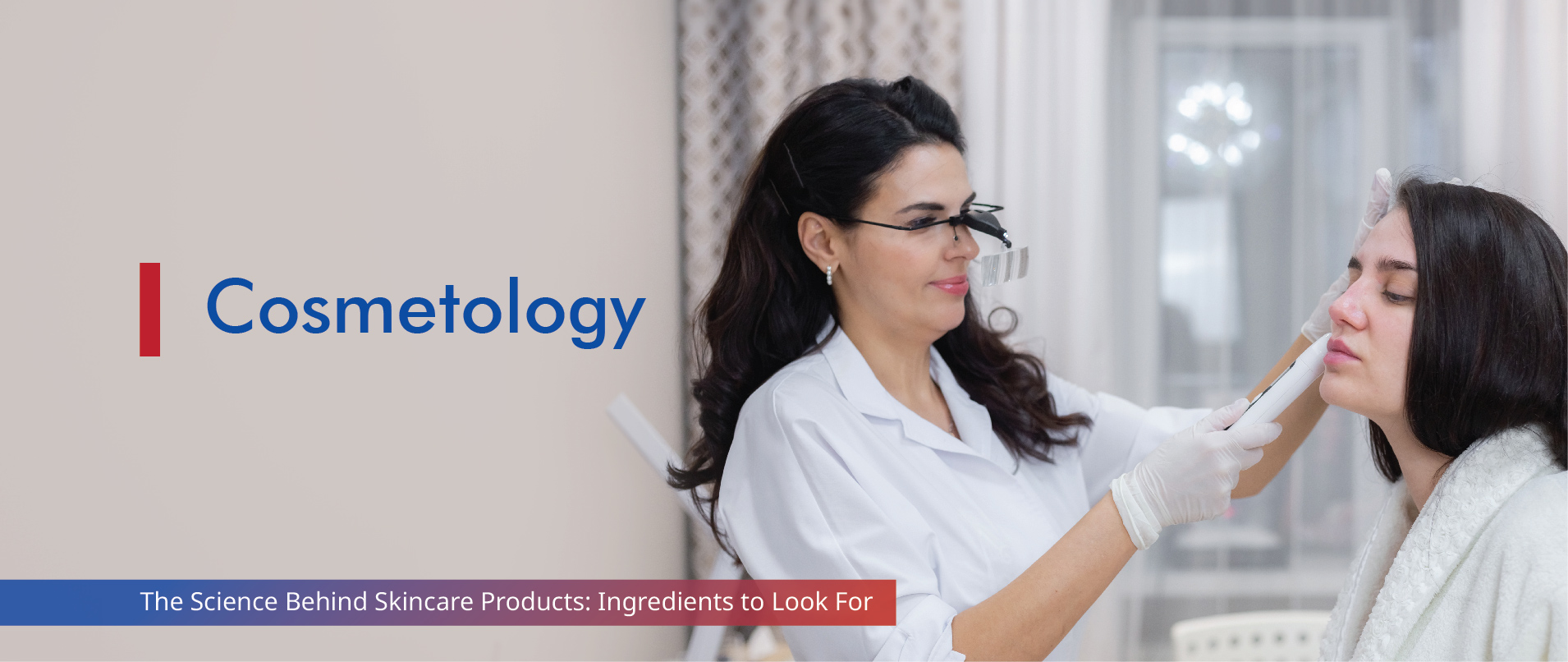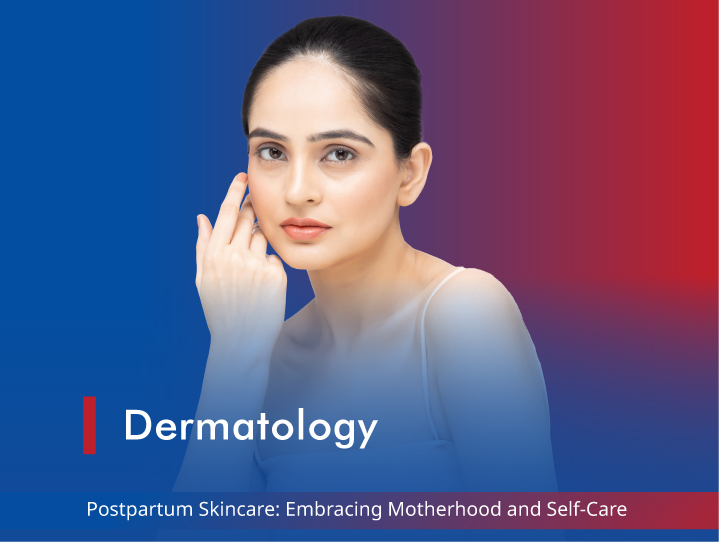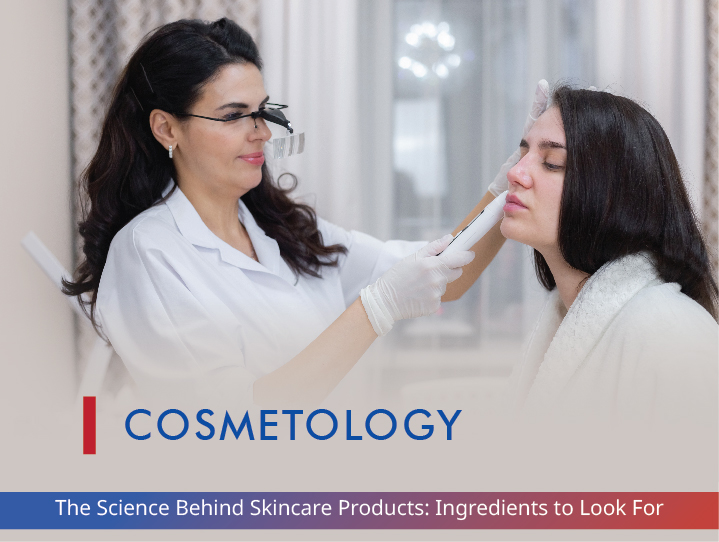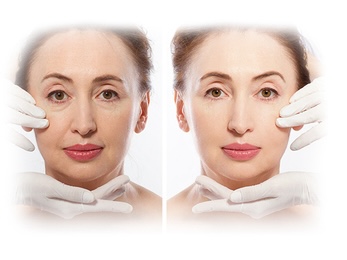Skincare is an important part of many people’s daily routine, and understanding the science behind the ingredients in one’s favourite products can help make informed decisions about what to put on the skin. From active ingredients targeting specific skin concerns to functional ingredients maintaining skin health, the skincare world can be complex and overwhelming. In this article, let us try to answer the question “how to choose skincare products?” by explaining the science behind skincare ingredients, showcasing their roles, interactions, and the latest research on their benefits.
Understanding Skincare Ingredients
Skincare products contain various ingredients, each serving a specific purpose. These ingredients can be broadly categorised into three main groups:
- Active Ingredients:
Active ingredients are the key players in a skincare product. They address specific skin concerns such as acne, ageing, or hyperpigmentation. These ingredients directly impact the skin, often at a cellular level. Examples of active ingredients include retinol, glycolic acid, and vitamin C.
- Filler Ingredients:
Filler ingredients provide a base for the active ingredients, helping to create the desired texture, consistency, and appearance of the skincare product. These ingredients may include water, oils, and emulsifiers, among others. While filler ingredients may not directly impact skin health, they play a crucial role in the formulation and user experience.
- Functional Ingredients:
Functional ingredients support the overall health and well-being of the skin without necessarily targeting a specific concern. These ingredients may have antioxidant, moisturising, or soothing properties and can work harmoniously with the active ingredients to provide a comprehensive skincare solution. Examples of functional ingredients include ceramides, green tea extract, and niacinamide.
Key Skincare Ingredients and Their Benefits
Now that we’ve explored the basic science behind skincare ingredients, let’s explore some of the most commonly used and well-researched ingredients and their benefits:
- Glycolic Acid:
They are considered as one of the best skincare ingredients. Glycolic acid is an alpha-hydroxy acid (AHA). It has a unique ability to exfoliate the skin, thus improving its texture and reducing the appearance of fine lines and wrinkles. It disintegrates the dead skin cells, allowing them to be easily sloughed off, revealing a brighter, more even complexion.
- Retinol:
Retinol, a common form of vitamin A, is widely recognised for its anti-ageing properties. It stimulates collagen production, thus reducing fine lines and wrinkles and improving skin texture and tone. Retinol can also unclog pores and reduce the appearance of blemishes.
- Hyaluronic Acid:
Hyaluronic acid in the skin is responsible for maintaining its hydration and plumpness. When applied topically, hyaluronic acid can help draw moisture into the skin, leading to a more youthful and radiant appearance.
- Vitamin C:
Many scientists consider vitamin C to be one of the most effective antioxidants that protects the skin from environmental stressors like UV radiation and pollution. It is also essential for collagen formation, thus improving skin firmness and reducing fine lines and wrinkles. Vitamin C also brightens the skin and even out discolouration.
- Niacinamide:
Niacinamide, or vitamin B3, is a multi-functional ingredient that can address various skin concerns. It has been shown to help reduce the appearance of blemishes, improve skin texture, and even improve skin tone. Niacinamide can also help strengthen the skin’s natural barrier, improving hydration and reducing sensitivity.
- Peptides:
Peptides are small chains of amino acids. They signal the skin to produce collagen and elastin, helping maintain skin elasticity and firmness. By activating the production of these proteins, peptides can reduce fine lines and wrinkles, thus improving overall skin texture.
- Zinc Oxide:
Zinc oxide is a mineral-based ingredient that is a common ingredient in sunscreens due to its ability to provide broad-spectrum UV protection. However, it can also benefit other skin concerns, such as acne, as it has antimicrobial and anti-inflammatory properties.
- Salicylic Acid:
Salicylic acid is a beta-hydroxy acid (BHA) that is particularly effective at addressing acne-prone skin. It penetrates deep into the pores, which can help unclog and reduce the appearance of blemishes. Salicylic acid can also improve skin texture and decrease fine lines and wrinkles.
- Ceramides:
Ceramides are lipids in the skin’s outer layer, the stratum corneum. They play a crucial role in maintaining the skin’s barrier function, which helps keep moisture in and environmental stressors out. Topical application of ceramides can help improve skin hydration and diminish the appearance of dryness and irritation.
- Green Tea Extract:
Green tea extract contains antioxidants, mainly polyphenols, which can guard the skin from environmental stressors and free radical damage. It also has anti-inflammatory properties, making it a beneficial ingredient for acne-prone or sensitive skin.
The Science Behind Skincare Products
The science behind skincare is a complex and ever-evolving field. Researchers constantly explore new ways to improve the efficacy and safety of skincare products. Science is crucial in developing effective, evidence-based solutions, from formulation to ingredient interaction and skin penetration.
- Formulation:
The skincare formulation is a delicate balance of art and science, where chemists and formulators work to create products that are not only effective but also stable, safe, and aesthetically pleasing. The choice of ingredients, their concentrations, and the way they are combined can significantly impact the overall performance of a skincare product,thus it is always better to seek expert’s advice, says Dr. Pratiksha Jain, Cosmetologist, at SPARSH Hospital.
- Ingredient Interaction:
The interaction between different ingredients in a skincare product is an important consideration. Some ingredients may work synergistically to enhance the desired effects, while others may counteract or neutralise each other’s benefits. The knowledge of these interactions is essential for developing effective and safe formulations.
- Skin Penetration:
Another key aspect of skincare science is an ingredient’s ability to penetrate the skin and reach its target site. Factors such as particle size, lipophilicity, and the skin’s natural barrier can effectively influence an ingredient’s ability to reach and address the intended skin concern.
- Clinical Trials:
Rigorous clinical trials are an essential part of the skincare industry, as they provide scientific evidence on the safety and efficacy of skincare products. These trials involve testing the products on human subjects, often under controlled conditions, to assess their performance and any potential side effects. Understanding the science behind skincare ingredients helps you make informed choices for healthier skin. From active to filler and functional ingredients, each plays a vital role in skincare. With knowledge about skincare science, you can optimise your skincare routine, promoting radiant, healthy skin.











